RIP David Lynch.
(See Harper’s In Memoriam)
Lynch’s films have many admirers, of course, and he is also much beloved for his various forays into other visual arts. As many have pointed out, Lynch wanted to be a painter.
But as sound people, we at ACL must mention that his use of sound design and music has inspired countless artists as well, and Eraserhead in particular is arguably among the main influences on early dark ambient and industrial music.
In this post, I’ve hastily collected some of my favorite writing on Lynch focusing on sound and noise.
Lynch’s influence on industrial and noise music became readily apparent to me while I was writing an essay about Nurse With Wound a decade ago. A few years later, a friend and I co-wrote a case study of the band Fistfuck, composed of Diana Rogerson and Jill Westwood. I interviewed both women for the piece, and learned that Jill Westwood was inspired to use film by David Lynch, among many others. It was Eraserhead that gets mentioned the most consistently, and as such that film stands as a defining moment of the era, particularly notable for its use of sound, which, alongside Brian Eno’s Ambient 4: On Land (1982), marks the beginning of an earthy and grounded approach to electronic music, temporarily freed of the retro-futurist baggage it was saddled with during the Space Race.
David Keenan, England's Hidden Reverse
[Diana] Rogerson had finally heard Nurse [With Wound] courtesy of a rough tape of Sylvie & Babs spun incessantly at Produktion. When a dealer friend mentioned that he had to drop off some hash at Stapleton's workplace, Rogerson tagged along, curious to meet the maniac behind "Registered Nurse". The office was closed but Stapleton had stayed late, working on the Sylvie & Babs cover. "I've always found Oxford Street to be unbearable, just too full of people and so noisy," Rogerson says. "It was an amazing contrast when we pulled off into Poland Street, and there was Steve just working very silently on his own, amidst al this chaos outside, where everyone seemed so caught up with their own image. We looked at each other and the lightbulbs went on. It was like when you meet someone that you're really going to like and you don't know why. Suddenly the room gets brighter. It was like something out of Eraserhead." (112-3)
[Balance and Sleazy of Coil’s] first contact revolved around a shared passion for Andrzej Zulawski's Possession and the films of David Lynch, and Balance and Sleazy immediately suggested that they meet up. Thrower was fully aware of a certain "carnal curiosity" that soon manifested itself in both sides' letters. "Although there was no clumsy attempt to seduce in the obvious sense of the word," he insists. "What flirtatiousness there was tended to be in the form of asides and whilst I was aware of this factor, there was plenty to suggest that it was in the way of an optional extra. Looking back at the letters now, I'm surprised at how knowing my side of the correspondence was — I suppose there was an awareness that we really were quite similar in tastes and in approach to the objects of our devotions. Even as I was becoming aware of a certain currency that my age and looks afforded, there was also a wish to establish contact in a way that transcended all that. One letter I sent to Sleazy bemoaned the fact that whilst we might want to sexually exploit the audiences for 'Oi' music there was little chance of pulling these youths into the sort of experimental field we were pursuing. Of course, the PTV aesthetic had been at least partially governed by Sleazy's interest and desire for this look. (123-4)
Žižek, The Art of the Ridiculous Sublime: On David Lynch’s ‘Lost Highway’
After the release of Eraserhead, his first film, a strange rumor began to circulate to account for its traumatic impact: At the time, it was rumored that an ultra-low frequency drone in the film’s soundtrack affected the viewer’s subconscious mind. People said that although inaudible, this noise caused a feeling of unease, even nausea. This was over ten years ago. Looking back on it now, one could say that David Lynch’s first feature-length film was such an intense experience audio-visually that people needed to invent explanations... even to the point of hearing inaudible noises. The status of this voice that no one can perceive, but which nonetheless dominates us and produces material effects (feelings of unease and nausea), is real-impossible: it is the voice which the subject cannot hear because it is uttered in the Other Site of the fundamental fantasy - and is not Lynch’s entire work an endeavor to bring the spectator “to the point of hearing inaudible noises” and thus to confront the comic horror of the fundamental fantasy? (47)
Todd McGowan, The Impossible David Lynch
This is a barrier that few, even the most radical subjects, are able to cross. Our investment in the capitalist world derives from the stable grounding that it provides for our identity. In Seminar XX, Lacan points out that a secure and constant "meaning is provided by the sense each of us has of being part of his world." Our world is not just a place we inhabit; it is a fictional center to which we can always appeal. Specifically addressing the leftists in his audience, Lacan tells them, "you are more attached to it than you care to know and would do well to sound the depths of your attachment." Eraserhead offers subjects—leftists and all others—an opportunity to "sound the depths" of their attachment to the dissatisfactions of the capitalist world. By presenting the destruction of this world and the meaning it provides as the price for escaping its chains, Lynch demands that we confront the ultimate barrier to political acts—our investment in the very structure that our acts would contest. (48)
David Toop, Oceans of Sound
“my life in a hole in the ground”
The New Orleans torture Scene conjured in hallucinogenic close up by David Lynch in Wild At Heart: a slowed-down Adrian Sherwood production—"Far Away Chant" by African Headcharge—adds further dimensions of hoodoo otherness to Lynch's trademark shade world of sexual violence, Prince Far I's warping sandblast vocals rising up from the catacombs ... in this unholy place a steady throb of Rastafarian repeater and funde drums somehow twisted in the unconscious to draw on archaic fears, fear of voodoo, fear of the primeval occult, the old unhealthy fear of Rastas as "menacing devils with snake nests for hair" (120-1)
“sound design”
Despite all these caveats, the process of composing by imagining, then depicting, inner landscapes and scenarios which 'remain private to the composer can create striking results. "It's something I do" , admits Paul Schütze, once an Australian-based soundtrack composer for cinema" now the London·based creator of albums such as Apart, The Surgery of Touch, The Rapture of Metals and New Maps of Hell. But it's hard to know whether I do that because I spent so, long doing film or whether I gravitated to film because I do that first. Interestingly, I think the reason ,I stopped doing film, is because, even though film potentially facilitates the total design of a pan-aural event by inducing musical and non-musical sound, it doesn't really take advantage of that. With the few exceptions that we all are acutely aware of; like Alan Splet's work with David Lynch, Walter Mirch's work with Coppola and Scorsese, and a very few other individual 'isolated examples such as the Coen brothers' films like Blood Simple and Hudsucker Proxy, film doesn't allow this. It's logical, because, film is a massively expensive medium." (265)
“Oceans of Sound”
"I feel a little bit strange," says David Lynch. Well, what else? We are sitting in a large, L-shaped room in his home. One wall, vast as a drive·in movie screen, is glass, behind it lies the vegetal mystery and darkness of the Hollywood Hills at night. Lynch lost his dog in this darkness, eaten by coyotes, he maintains. The room echoes with our voices and explosive snaps from a log fire, spearing the cold air, ricocheting off the walls and ceiling. Three items of 1950s' furniture occupy the broad expanse of floor, megalithic in their hapless, solitary arrangement. Lynch may well have deliberately placed these few chairs at shouting distance from each other in order to make relaxation and intimacy as difficult as possible.
Although Twin Peaks, designed by Lynch and writer Mark Frost for ABC TV, degenerated into aimlessness, the original pilot contained moments of genuine strangeness, particularly the music and the red curtain ending. The otherworldly quality of this latter scene came partly from the fact that it was shot in reverse. "The whole thing was shot backwards,” says Lynch. "You start at the end and work to the beginning. All the camera moves, therefore, are backwards. All their walking is backwards and all their talking is backwards but the whole idea of it, of course, is that it will not and it should not look exactly realistic but it should look somewhat realistic. We had to rehearse all that. There were just two actors and they had to learn their lines backwards. They had their lines printed on a tape backwards and they'd just listen over and over to it. Some sounds backwards are just impossible to duplicate. I wanted to do more of this thing—it's really a nifty look and feel. The timing is funny."
This nifty mood, reminiscent of ectoplasmic spiritualist seances, carried over into the music, which was sung by Julee Cruise and created by Angelo Badalamenti with Lynch writing lyrics. Lynch sent Badalamenti a column of forty words, written on an envelope. Badalamenti recalls this envelope when I talk to him on the telephone. "He sent tile a lyric called 'Mysteries of Love' ", says Badalamenti. "It was like six lines of poetry. I called him and asked him, 'What do you want me to do with this? What kind of music?' He said, ‘Make it like the waves of the ocean. Make the music like a beautiful wind and like the song chanting through time. And cosmic.' So I said 'Oh, I'm glad you told me'." This fruitful partnership went on to produce performance pieces, television commercials and an album—Floating Into the Night. If Chet Baker had sung lyrics over Nino Rota orchestrations of Santo and Johnny's "Sleepwalk" and The Chantays' "Pipeline" then the result might have sounded similar to Julee Cruise's oceanic crooning. (268-9)
Greg Hainge, Noise Matters
Noise is oftentimes figured as an interference, as a glitch in the clean transmission of information, a point at which something is not quite right. Bearing this in mind, Chapter Six looks at cinematic noise in two works by maverick American filmmaker David Lynch. Through a close analysis of his first and (to date) last feature films, Eraserhead and INLAND EMPIRE, I suggest that something is indeed not right here and that his films are extremely noisy, but that this has nothing (or little) to do with their ‘noise’- filled soundtracks. Whilst this kind of literal or common sense ‘noise’ may indeed point us towards the importance of noise as a fundamental principle for the construction and subsequent analysis of any Lynch film, I propose that a better understanding of the place of noise in his films forces us not only to reconsider many preconceptions about the meaning of his films, but also to rethink our critical strategies in the face of them. This is to say, then, that his films require us to attend to their noise and thus adopt a non-hermeneutic stance. (27)
“On Noise and Film. Planet, Rabbit, Lynch”
The cinematic universes created by David Lynch are places where things are not quite right, where categorical distinctions and identities are not stable, where the abject constantly threatens to surge forth and transgress the borders that we draw up in a futile attempt to contain and create meaning. These, then, are universes that share many of the ontological qualities of noise and it is thus perhaps unsurprising that they should be filled with noise. By this I do not only mean that their soundtrack is often populated by all manner of noises (in the common sense meaning of the term) – even if these may serve as an indication of a more generalised form of noise. Rather, I mean that his films seem constantly to dissolve into the noise from which they are constituted, both philosophically and formally, to erase their own form and identity or, perhaps, the possibility of imposing on them anything that would resemble a form, identity or meaning. (178)
Eraserhead
If the opening composite shot of David Lynch’s debut feature-length film, Eraserhead (1977), seems to present a dialectic of animate (in the form of Henry) and inanimate matter (in the form of the planet), we need only look more carefully to see that this is not the case. Indeed, the shot that superimposes Henry’s head over the planet is composed in such a way that the two are conflated in the darkness that conjoins them, the bottom half of the planet (in shadow) merging with Henry’s dark hair. Even if the apparent dialectic we may have thought to exist appears to be reinforced as Henry’s head floats around the screen whilst the planet remains still, solid, immutable, and even if it appears to be reinforced further still by the next shot (an aerial tracking shot over the planet’s rocky, barren surface), both the planet and Henry are quickly revealed to be governed by the same processes. …
This opening to Eraserhead has provoked a lot of critical commentary, much of which analyses it according to various psychoanalytic paradigms – unsurprisingly, perhaps, as this opening seems to lend itself so easily to interpretation as a dream sequence and seems ostensibly to present us with a birthing sequence seen from both a third and first-person perspective. I believe, however, that such psychoanalytic interpretations of this scene, of the whole film, indeed of Lynch’s entire filmic output do not in actuality account for what we are presented with on the screen. Indeed, it might be suggested that the description of the opening to Eraserhead provided above is not merely a denotative description of the film’s content but already an interpretation of it, for I have read across the various shots that make up this opening sequence as though there were indeed cause and effect relations between them. But what if this is not the case? What if the pulling of the levers does not in fact trigger the actions we see subsequently? What if we attribute these cause and effect relations to the shots of this sequence only because of our familiarity with a certain dominant cinematic vocabulary that has trained us in the art of suturing together the disparate fragments of reality that are appended to each other in continuity editing? Indeed, does the second lever pull (unlike the first and third) not trouble our ability to understand the cinematic language and codes we assume to be on display by not triggering any action per se, only a change of scenery in which we expect something to happen?
For Michel Chion, this is in fact the ‘peculiar logic’ of Lynch’s entire cinematic output, and it requires us ‘to renounce all a priori interpretations of behaviour and facts, whether taken separately or in succession’.6 In his reading of Lynch’s early work The Grandmother, for instance, Chion finds ‘unusual cause and effect chains defying the first law of thermodynamics’7 such that ‘there seems to be no link between food and growth’. For Chion, The Grandmother, one of Lynch’s early shorts, is then governed by what he terms ‘an “electro-magical” type of logic’.
This kind of noise, as well as its more literal auditory correlate that acts as a sonic clue to this plane that always subsists beneath the film’s expression, is present in all of David Lynch’s work. What this noise suggests to the viewer is that Lynch’s work, both in its content and through the cinematic vocabulary he employs, consistently and deliberately confounds the possibility of ascertaining his films’ meaning. Rather than search for meaning, the cinema goer must engage with these texts as properly cinematic objects …. allowing the strangeness and mystery inherent to the medium for Lynch to come forth. (183-4)
Michel Chion, Lynch
It is worth noting that Lynch the director expressed his rejection of school on a number of occasions, and devoted his first short film, The Alphabet, to a satire on education’. In contrast, Lynch enjoys telling how his parents first met, that is to say, the circumstances that led ultimately to his conception: It was at an outdoors biology class, when they were both at Duke University.’’ Lynch was born under the sign of the outdoors and biology! His parents never argued, he has said, nor did they drink or smoke (which would have bothered him). He got along well with his brother and sister; all of his grandparents got along well too (he parodied this in the ending of Blue Velvet), and when they came to see the family in their handsome Buick they brought gifts. His first experience of the city, going to see his maternal grandmother in Brooklyn, proved memorable for the hoy. The New York subway, the wind, the smell and the sound left a strong impression. It is strange how, in other inter¬ views, Lynch associates Brooklyn with visiting his mother (unless the journalist erred in the transcription). Is one to conclude that his parents seperated? In any case, these impressions based on a comparison between the easy environment of his childhood and the noisy metropolis, furnished Lynch with the very paradigm of differentiation: ‘The contrast when I went to see her led to my fascination with big industrial cities.’ ‘I think what happened was that I went to a big city and it scared me. It was real frightening.’ Lynch always uses contrast to structure his films: ‘Contrast is what makes things work,’ he said when explaining how he conceives his film projects. And he had this bizarre answer to the question of what his parents were like: ‘People differ according to place.’ Was he thinking about his father’s world of nature and his mother’s urban, machine world? (5-6)
[Lynch] decided to make "film paintings’: ‘When I looked at these paintings, I missed the sound. I was expecting a sound, or maybe the wind, to come out. I also wanted the edges to disappear. I wanted to get into the inside. It was spatial ...
At some specific point, the possibility of penetrating into the painting be¬ came real as he looked at a painting he had just finished: "As I looked at what I’d done, I heard a noise. Like a gust of wind. And it came all at once. I imagined a world in which painting would be in perpetual motion. I was very excited and began to make animated films which looked like moving paintings, no more and no less.’" One notes that it is a cross between painting and sound, and a typical Lynchian sound like a gust of wind, that provides the decisive impetus which set him in motion, as if the image could not come alive by itself.
During his second year of study at Philadelphia, Lynch produced his first film, lasting one minute. It appears in his filmography under the title Six Figures. The film, which is the only film of Lynch’s that I have not seen, was made to be projected on a special sculpture-screen, the surface of which contained reliefs in the shape of heads (modelled after Lynch’s) and arms at precise points. The film, which also showed heads and arms, was projected on to the screen in such a way that some of the filmed heads appeared on the heads in relief and thus became deformed: "In the course of the projection, the heads were transformed into stomachs and it looked like the stomachs caught on fire. Everything started to move, contract and vomit. And then it started up again. For the soundtrack, I used a siren.’ (10)
In 1975, when Alan Splet was able to join Lynch in the garage-studio they had equipped, they worked together for a long time creating the film’s sound effects. The equipment they used was fairly standard and many of the film’s sounds were achieved acoustically using pipes and traditional instruments, exploring very thoroughly the sound potential of their equipment, adopting the same techniques deployed for musique concrete in France. The film bathes in an uninterrupted sound-atmosphere, with the constant rush of boiler sounds, whirlpools, electronic organ chords, and the like. Its great originality lies in the use of brutal and instantaneous cuts into these sounds, cuts which often coincide with a change in shot and have surprising power. They are like image tensors, isolating the shots from one another even as they join them, drawing out the time of each shot in relation to its two boundaries, constituted by the two cuts confining the segment. This phase of the work, which combined Lynch’s editing of the images and Splet’s sound edit, ran from the summer of 1975 until the spring of 1976. […]
The world premiere on 19 March 1977 in Los Angeles provoked the same kind of surprise but, according to Jack Nance's recollection, there was also a round of applause. Nevertheless, Variety published a negative review of the film: ‘A sickening bad-taste exercise … Set, apparently, in some undefined apocalyptic future era, Eraserhead consists mostly of a man sitting in a room trying to figure out what to do with his horribly mutated child.... Like a lot of Institute efforts, the pic has good technical values (particularly the inventive sound mixing), but little substance or subtlety ... Lynch seems bent on emulating Herschell Gordon Lewis, the king of low-budget gore’ (23 March 1977). (38-9)
Lynch can be said to have renewed the cinema by way of sound. If his visual continuity is classic and transparent (though with a kind of warp which once again reveals the force of cinema, as a slight change in the conventional rules yields a wealth of new effects), his sound continuity is idiosyncratic from the outset. Sound has a precise function, propelling ns through the film, giving us the sense of being inside it, wrapped within its timespan. The sound is animated from the inside by a perpetual pulsation. The noise of the machine, its micro-activity of particles, places us in a secure inner space like some bodily machinery, the archaic body which the boy of The Grandmother tries unsuc¬ cessfully to reconstruct. And yet, bizarrely, this continuum is shot through with discontinuities. Having learned that to join, to build, one must first separate, Lynch began, with ever-increasing clarity, to construct continuities by means of discontinuities, to join by separating. Like many directors, he does this through the image but also, and with far greater originality, through sound. Given its fundamentally temporal nature, sound (far more than the image) is ordinarily likened to a continuum, a flow, and used in this way. However, in Lynch's work, the pulsation of sound environments does not give rise to a flow which overrides the cuts. The pulsation is perpetually stopped and started by scissors which at once separate and join, often in synch with the visual cuts. The author controls the pulsation like a flow, which he interrupts to distribute and regulate it in spurts. This may be why Lynch denies confusing creation and dream. Dreams cannot be controlled, he has said, which means that for him their flow cannot be cut and put back together again. The result is a paradoxical style of sound editing which, from Eraserhead to his most recent films, reaffirms continuity through in¬ terruption. Unlike Godard, for example, who cuts sound in the same way as he cuts image and text, prising it out of its temporal specificity, Lynch uses abrupt, often bold interruptions in sound to the opposite effect: his sound cuts are designed to achieve an inscription into time, amounting to a crea¬ tion of time by the director, like a demiurge. An emblematic example of such a demiurgical gesture occurs at the beginning of Eraserhead. Henry is back at home and turns on the phonograph. He places the needle on different grooves of a jazz record, carving out little islands of swing music separated by silence. As the director’s alter ego, Henry performs live sound editing! Without scissors, just using his hand well before the invention of scratch music, he creates islands of sound time. With sounds in Lynch's work, we are constantly within something. To begin with, we are inside the shot. Synchronising the sound cuts with the visual cuts settles us inside the shot as if in a nest. (44-5)
The mention of Van Gogh, who was a wounded man hut also a major figure and a great painter, is symbolic. Lynch wanted to he a painter. However, according to his own testimony, he became a film-maker instead, by way of sound, that is to say, by way of the ear. (96)
David Lynch, Catching the Big Fish: Meditation, Consciousness and Creativity
“Cinema”
Cinema is a language. It can say things—big, abstract things. And I love that about it.
I’m not always good with words. Some people are poets and have a beautiful way of saying things with words. But cinema is its own language. And with it you can say so many things, because you’ve got time and sequences. You’ve got dialogue. You’ve got music. You’ve got sound effects. You have so many tools. And so you can express a feeling and a thought that can’t be conveyed any other way. It’s a magical medium.
For me, it’s so beautiful to think about these pictures and sounds flowing together in time and in sequence, making something that can be done only through cinema. It’s not just words or music—it’s a whole range of elements coming together and making something that didn’t exist before. It’s telling stories. It’s devising a world, an experience, that people cannot have unless they see that film.
When I catch an idea for a film, I fall in love with the way cinema can express it. I like a story that holds abstractions, and that’s what cinema can do.
“Sound”
Sometimes you hear a piece of music, and it marries to a scene in the script. When I’m shooting, I will often play that piece of music in the headphones while listening to the dialogue. Hearing the music is just a verification that things are going the right way—for instance, the right pace or lighting. It’s just another tool to ensure that you’re following that original idea and being true to it. So it’s a good thing if you’ve got some music up front to play to see if the scene works.
Sound is so important to the feel of a film. To get the right presence for a room, the right feel from the outside, or the right-sounding dialogue is like playing a musical instrument. You have to do a lot of experimenting to get that just right. It usually happens after the film is cut. But I’m always trying to gather what I call “firewood.” So I have piles of things I can go to and see if they’ll work. You just have to pop one sound in, and you realize right away, Oh, that is not working.
I’ll leave you with some final words from the man himself. During the pandemic, my friend Mayss interviewed Lynch for her show, Dreaming Live, which you can stream here:




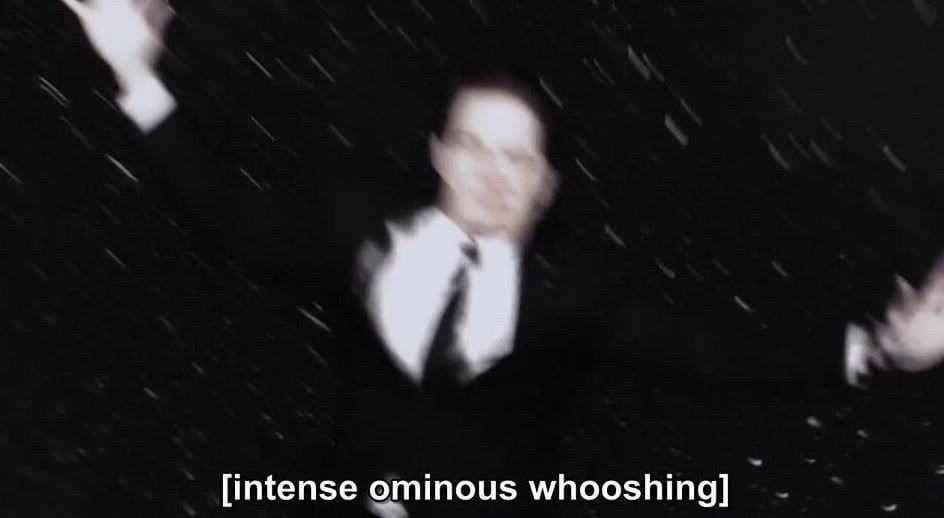
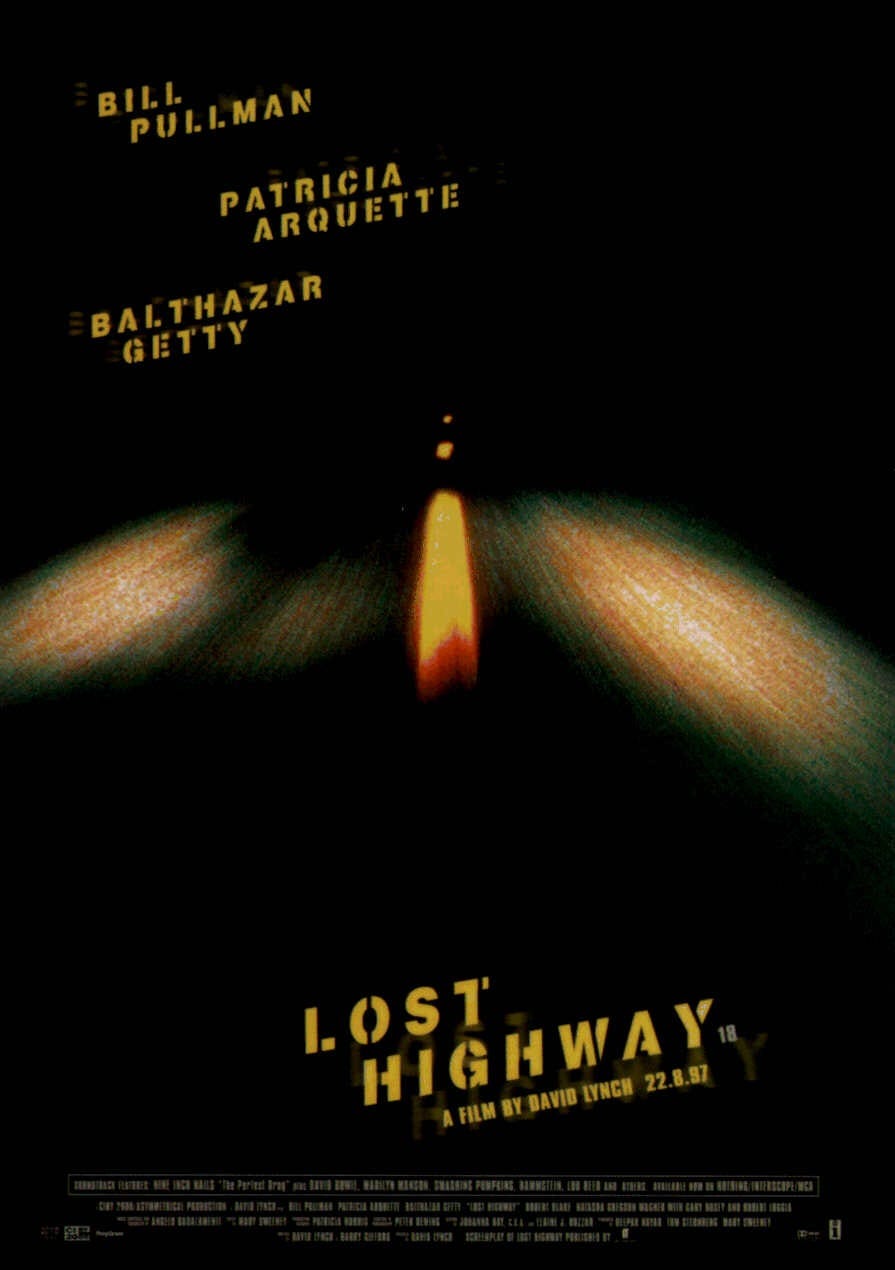

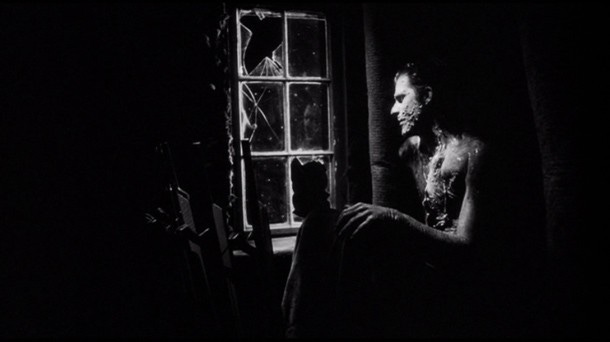

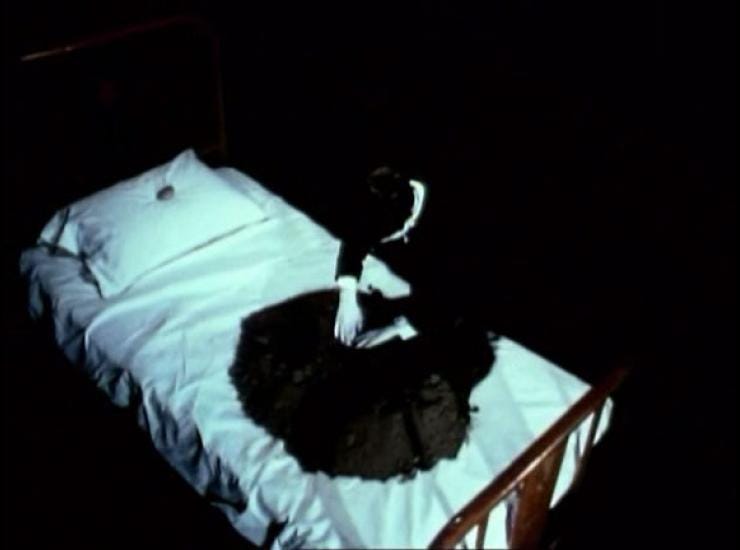
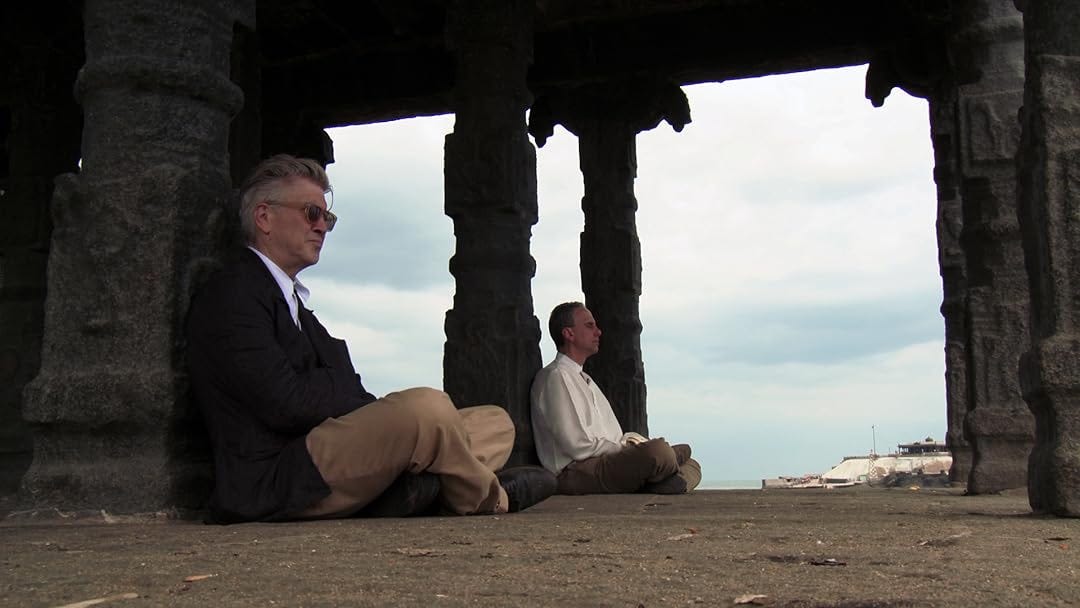

Loved this compilation, Žižek’s quote in particular is brilliant.